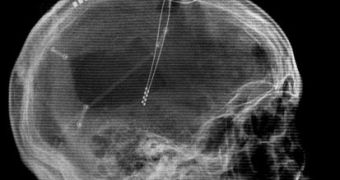You may have issues with various internal organs, but an impaired brain is by far the most severe problem. A disabled brain might make you a 'vegetable'. This was the case with a man who got a severe brain injury six years ago, when he was badly beaten. The man was able to make just slight eye or finger movements, and his life seemed to be finished. But deep brain stimulation managed what he did not even dream about: now, he can chew food, swallow and speak.
The deep brain stimulation was carried on by Dr. Ali Rezai, a neurosurgeon at Cleveland Clinic's Center for Neurological Restoration. This technique is not a novelty, it's already used in the treatment of Parkinson's disease, in which case it manages to lower the tremors experienced by patients.
The procedure involves the implantation of electrodes into specific brain areas. This looks quite sadistic, but it could be of major potential for fighting the effects of brain injuries.
Over a period of six months, scientists alternated electrical stimulation with fake stimulation to clearly determine if it was effective, helping the man. After only 48 hours following the first stimulation, the man could maintain his eyes open, turn his head and speak words. Several additional treatments enabled the man to carry out more complex tasks like brushing his hair.
Before the treatment, he was feeding through a tube; now, he can chew and swallow his meals. The technique will be soon applied in 12 more patients to check if they respond in similar ways.
If it proves to work in more brain injured patients, the whole standard treatment for minimally conscious brain injured patients could change totally. Most of these patients, in vegetative state, live the rest of their life in long-term care facilities. Electrical stimulation would confer a certain level of independence.
But as the causes and degree of brain injuries differ from one case to another, the response to deep brain stimulation can also vary considerably. Further research is also needed to assess the long-term effect of this stimulation. For now, however, it offers something valuable for these patients and their caretakers, and that would be hope.

 14 DAY TRIAL //
14 DAY TRIAL //